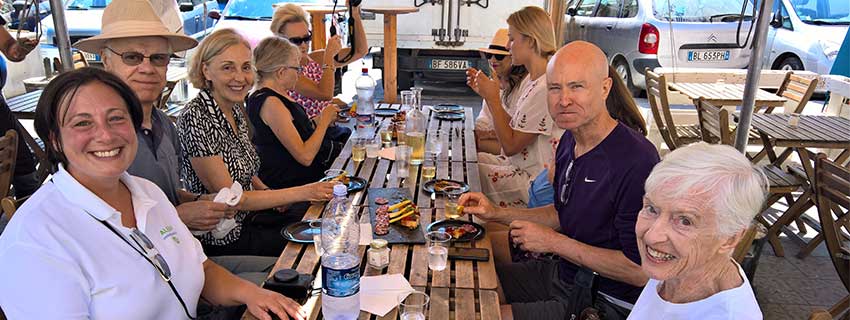Day 3 – Spanish Baroque
Siracusa has never taken kindly to foreign invaders: her citizens assassinated a Byzantine Emperor naked in the public baths, defied the Arabs for fifty years, held off the Normans for thirty-five, and massacred the French. Twice. But under 17th century Spanish rule, even as the peasants in the countryside suffered under terrible oppression, Sicilian cities like Siracusa bloomed with splendid buildings of the aristocracy. A massive earthquake in 1693 forced the Spanish to rebuild the historic center of Siracusa, the island of Ortigia, which now is crowded with massive Baroque palaces overlooking twisting medieval streets. Colorful laundry and flowers adorn balconies and stylish boutiques sit beside tiny shops where master woodworkers and puppet makers labour at their craft.
The heart of Christian Siracusa is the Piazza Duomo, where prehistoric Sikel altars lie under a Temple to Athena, whose original columns still embrace what became a Christian church become a 9th century mosque, become a medieval then baroque cathedral. This history makes Piazza Duomo the site of longest continuous worship in world.
Inside the cathedral deep within under the magnificent juxtaposition of ancient temple and Spanish baroque is where to tell the story of Santa Lucia, martyred by the Romans, while visiting her arm. Next door is the medieval Archbishop’s Library.
One can visit the cathedral and discuss the complex history while enjoying a coffee or granita (traditional lemon-ice treat) in a cafe looking at its celebrated Baroque facade. At dusk the square is transformed into a swirl of nightlife, as locals fill outdoor restaurants and promenade in their best attire in the sea air.
We could have lived anywhere in Siracusa, for that matter anywhere in Sicily, for that matter anywhere in Italy, for that matter anywhere. We chose Ortigia, in old Siracusa, in old Sicily. Come and let us show you why.


